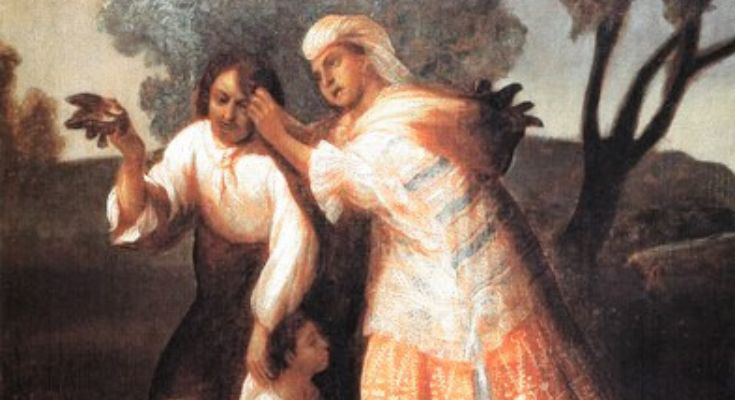
April 2, 2023
by Natalie Taylor
When the Spanish conquistadors seized the territory that is now Mexico, in 1521, they declared the native people to be barbaric and uncivilized. Iberian descendants—Portuguese, Spanish, and Basque, were believed to be superior and god-like. They took control of the lands, exploited the natives by putting them to work under terrible conditions, forced them to learn Spanish, and submit to European laws. Most importantly, the American natives had to accept Catholicism as the ultimate belief system.
The Spanish crown passed laws creating a social hierarchy to maintain power, known as the Casta System. The system was purportedly a way to explain mixed race families, but it was in reality a way to formalize the superiority of the "pure," white race of European birth. At the very top of this racial pyramid (outside the caste system), were the peninsulares—those born on the Iberian Peninsula. There were as many as 100 castes in New Spain; each social position dependent on the amount of "whiteness." Caste determined where you could live, the work you could do, the sanctioned clothing, and most importantly, the social, military, clerical, and political positions in which you could participate. It was an abhorrent system of human classification, an invented hierarchy based on skin color. But the casta paintings—which were commissioned by the Spanish crown, give a glimpse of the society of New Spain during the colonial period.
Juan Patricio Morlete Ruiz, son of the painter Nicolas Morlete, was born here in San Miguel el Grande in 1713 and died in Mexico City in 1770. A well-recognized 18th-century Mexican painter, he has many works throughout Mexico, and in museums in the United States. According to the casta classification, he was a mestizo—his father was Spanish, and his mother indigenous, and he is best known for his casta paintings.
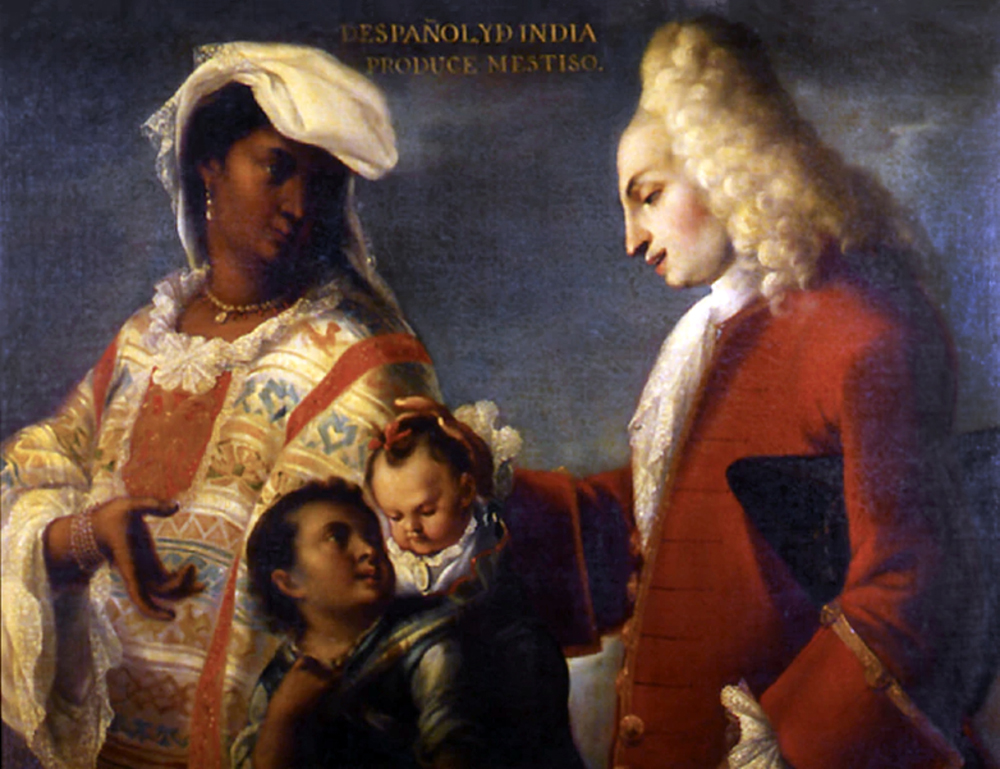
Here Morlete's depicts his own descendancy—Spanish father and Indigenous mother equals mestizos.
*
Morlete's paintings show family groups, with parents of different races, and their children. Spanish blood always held the highest rank, especially of those born in Spain, whom the natives disparagingly called gachupines. Their progeny, even if descendants of "pure" Spaniards, were called criollos—Creoles, if born on American soil. Although above other castes, criollos were still considered second class-citizens.
The basic premise of the castas was that successive intermarriage between Spaniards and Indians, would result in an upgrade to white Spaniard, after three generations. If enough "pure" Spanish blood infiltrated into succeeding generations, it allowed a leap toward "whiteness." Combining with blacks, however, led to racial degeneration—a torna atrás—a "turn back," dooming your descendants to never be allowed a return to a white racial pole.
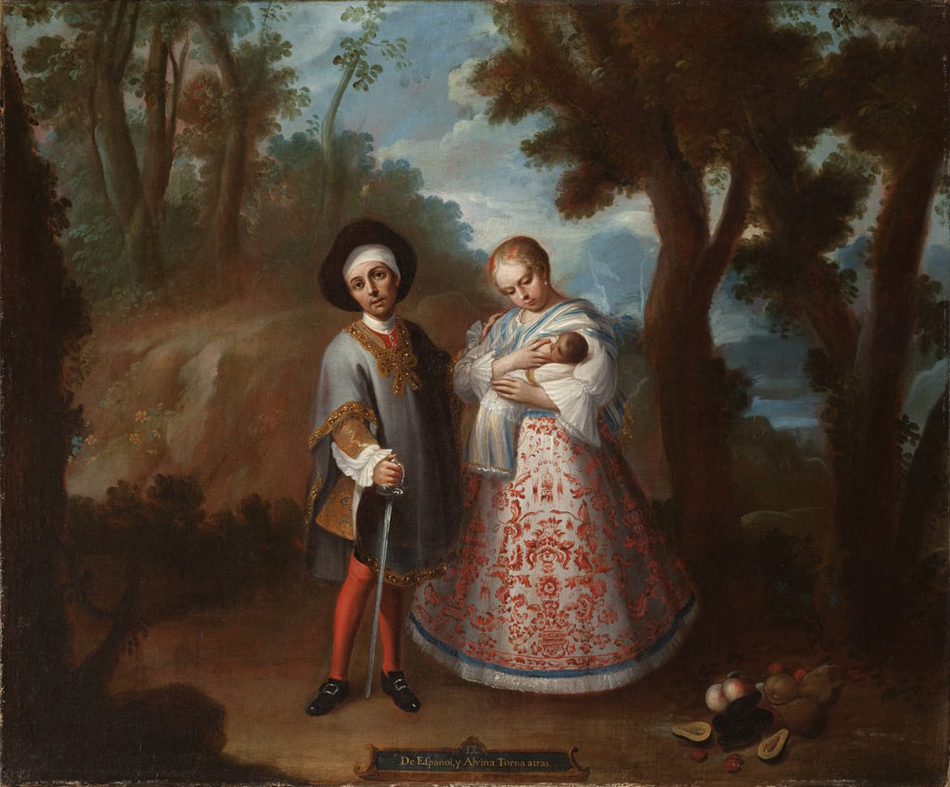
Spaniard and Albino (African descendant) produce a "turn back."
*
The racial combinations had specific names: mestizo, coyote, albino, mulato, zambo, and so on. Each successive mingling determined the societal position of the descendants; an obvious preoccupation with whitening of each generation, and the importance to forge the right marriages that enabled descendants to move upwards on the societal ladder.
Biologist and explorer Alexander von Humboldt wrote: "The Indians and the castes cultivate the soil... they live by the work of their hands... [leading to] that mutual hatred which universally takes place between those who possess all, and those who possess nothing, between masters and those who live in servitude." And he added: "But in America... there exists no intermediate state; we are rich or miserable, noble or degraded by the laws..."
Morlete was one of the first casta painters to show a clear depiction of clothing, hair, surroundings, and body language that resulted from racial mixing. He also depicted local flora and fauna to show the bounty of the New World, akin to the works of Dutch and Flemish paintings. Unfortunately, in spite of San Miguel being the city of his birth, we do not have any of Morlete's paintings here.
Although today we decry racial caste, the highly stylized casta paintings are a historical record of colonial times and attitudes. They are fascinating in their depictions of nature, of the furnishings, meals, and the interaction of people. The family groups are often shown with great tenderness, masking any (surely present) racial tensions. But some paintings do display anger, and even violence among the family members.
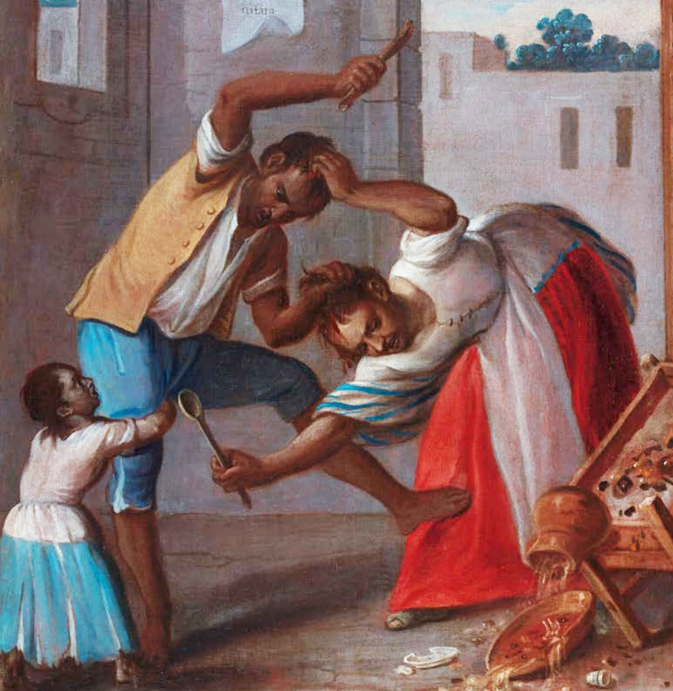
An example of family violence that was perhaps more common than peaceful coexistence.
*
The violence, by extension, reflected the resentments against society which seethed, lava-like in the hearts of the subjugated masses. This discontent, and particularly the anger felt by criollos about their second-class status, eventually led to a full uprising, and the War of Independence. But that's a story for another time.
Part II
**************
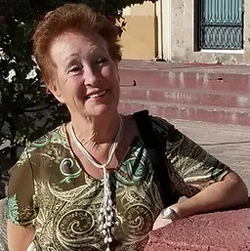
Natalie Taylor, born to Ukrainian parents, grew up in Argentina, where her family fled after WWII. They eventually moved to the U.S., and she spent most of her adult life there. She has a journalism degree, and an MFA in creative writing from Vermont College, Montpelier, VT. Her short stories, and poetry have been published in numerous literary magazines, and she has received several literary awards. She and her husband currently reside in San Miguel, where she has a weekly column in Atención, for which she also does translations. She has two books about San Miguel, available on Amazon or at the Tesoros Book Store: "Of All the Towns in All the World," and "SMA Self-Guided Historical Walking Tour." Her memoir, "The Tango House," will be coming out soon.
www.natalietaylor.org
**************
*****
Please contribute to Lokkal,
SMA's online collective:
 ***
***
Discover Lokkal:
Watch the two-minute video below.
Then, just below that, scroll down SMA's Community Wall.
Mission

Visit SMA's Social Network
